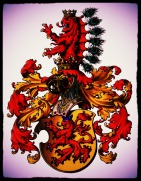Other
1798. Bern. City Taler. DAV-1760A (thin knight, large date variety). KM-164. Obv: Crowned, spade arms of Bern within oval frame
Obverse Legend: BERNENSIS RESPUBLICA. Rev: Standing Swiss with long sword, date below within oval frame. A scarcely matched offering, a premium Gem taler with unbeatable eye appeal. A gleaming representative displaying gem-quality luster and light surface tone this coin offers an enticing gold toning that is brought to life by notable nacre, lending to great eye-appeal. Of a quality hardly ever seen for this type. NGC MS-66.
ND (ca. late 17th/early 18th Centuries). Bohemia. Jan Hus Silver Medal ("Hus-Taler"). Donebauer-3453; cf. Whiting-5; UBS-66, lots 1895-6. Celebrating the reformer and inspirer of Hussitism. Obverse: Capped bust right; Reverse: Execution scene: Hus standing left, bound to pyre. An interesting type that was issued intermittently over a few centuries, in both cast and struck modules, with the majority being in silver. Very attractively toned and struck, with a particularly deep and alluring cabinet tone, and just some light hints of rub on the higher points. Though listed as Donebauer-3445 on the holder, the over fabric and stops in the legend point to the later Donebauer-3453 attribution. In his copious collection of Bohemian coins and medals, Donebauer had some 16 varying examples of this type. NGC AU-53.
Provenance: From the Augustana Collection.
1750s. Austria - Habsburg Territories. Cities in the Habsburg lands. Kremnitz Mint. Rare Dicker Double Schautaler (St. Georgstaler), ND (18th Century Issue). Engraved by Heinrich Fuchs. 61.74gr. Obv: St. George riding right, slaying the dragon. Reverse: Wind god blows to right. Christ and two apostles on ship. Huszar (Voglhuber 23, listed as a simple Schautaler). RR Very attractive item. Huszar has this piece as engraved by Heinrich Fuchs who worked at the Kremnitz mint during the mid-18th century. He suspects that under the wing of the dragon on the left is the medalist’s signature. NGC AU-55.
1780. Poland. Courland. Peter Biron (1769-1795) Albertus Taler. DAV-1624. Kopicki 4104. KM-32; Salv-89. Neumann 334, Kruggel/Gerbasevskis 7.1. Cr-23; Hcz-3410. Obv: Bust of Duke Peter Biron head right. Reverse: Crowned arms of Poland and Lithuania draped by a wreath and are atop a decorated frame. Original mint luster and beautiful, delicate silvery lilac surfaces. A special piece. Courland is situated in what is today western Latvia, From 1561 to 1795, the area was a semi-independent duchy. The land was owned by nobles descended from German invaders. In 1795, the last of these nobles, Peter Biron, sold the territory to Russia. The kingdom of Poland, weakened by the devastation of the Great Northern War (1700-21), fell under the domination of her neighbors, Prussia, Russia and Austria. Stanislas Leszczinski, a former lover of Catherine the Great, was installed as her puppet king on the death of the Saxon August III. When he proved to be insufficiently pliant, the partitions began. In three slices, in 1772, 1793 and 1795, the entire state was devoured. Even then, Stanislas could not rally the greedy and selfish Polish nobility to defend the country. Courland, now part of Latvia, was conquered by the Teutonic Knights in the Middle Ages and held by them until the Reformation led to their collapse. The region was contended by Sweden, Russia and Poland, with Russia the eventual winner. Duke Peter's father, Ernst Johann, lover to Russian empress Anna, was installed as a puppet ruler in 1737. Superb, beautiful, lustrous GEM. NGC graded MS-66. Finest graded.
1784. Belgium. Luik (Liège). Bishopric. Sede Vacante (30 April–17 August 1784) Patagon. AR Daalder – Écu (48 sols) au St. Lambert (40mm, 27.86g, 6h). DAV-1590. Vanhoudt G1364. Delm-489. Dengis 1192. Mignolet 304.KM-176. Struck towards the end of the Bishopric period in Liege, with only Sede Vacante issues struck from 1763 onward. Obv: Mitred bust of St. Lambert l facing left. Rev: Crowned and mantled Liege coat of arms within cartouche. Dated 1784. Obv: Mitred bust of St. Lambert left. Rev: Crowned and mantled coat-of-arms. Rare with a mintage of 150. NGC MS-62 PL.
1928. Cyprus. Republic Proof 45 Piastres. KM-19, Prid-1a. Obv: Crowned bust l. Rev: Two lions passant. A singular type that remains highly coveted by world crown collectors, struck to commemorate the 50th anniversary of British rule. Lovely silver lustre choice brilliant uncirculated specimen. NGC MS-65.
1944-Mo. Ecuador. 5 Sucres. Mexico City Mint. KM-79. Obv: Name of the country, Ecuador, year of issue, head of Antonio José de Sucre looking to the left. Rev: Flag of Ecuador with the Ecuadorian shield and the denomination at the top. A very attractive Gem crown, this lustrous specimen presents great brilliance and some subtle amber toning. PCGS MS-65.










